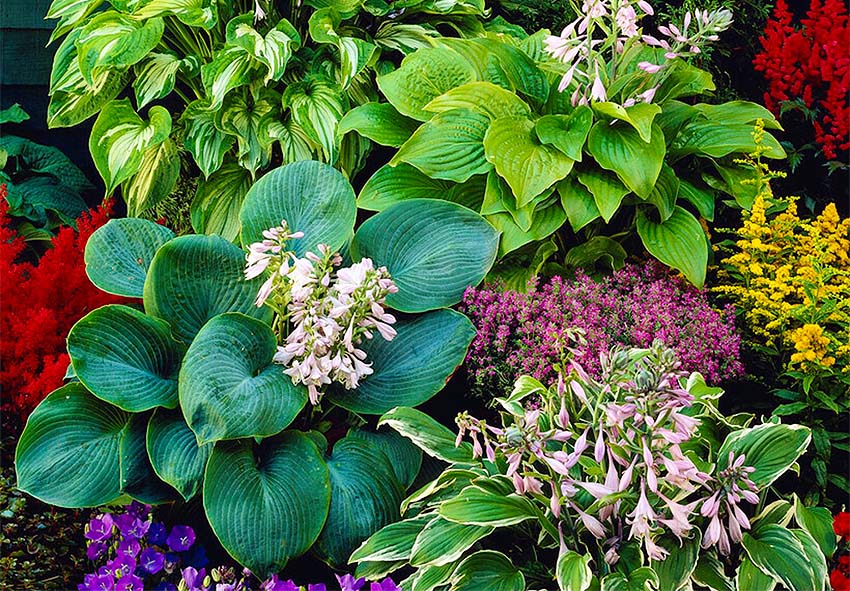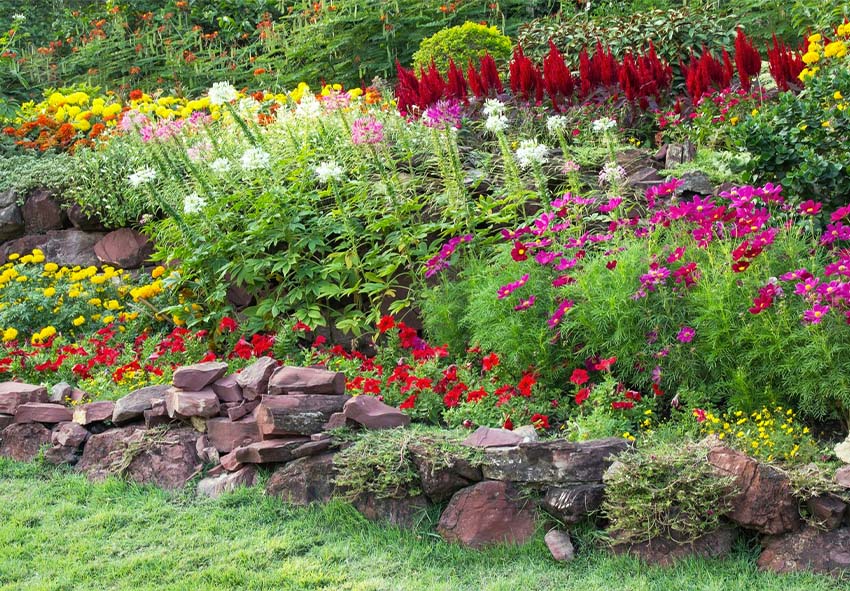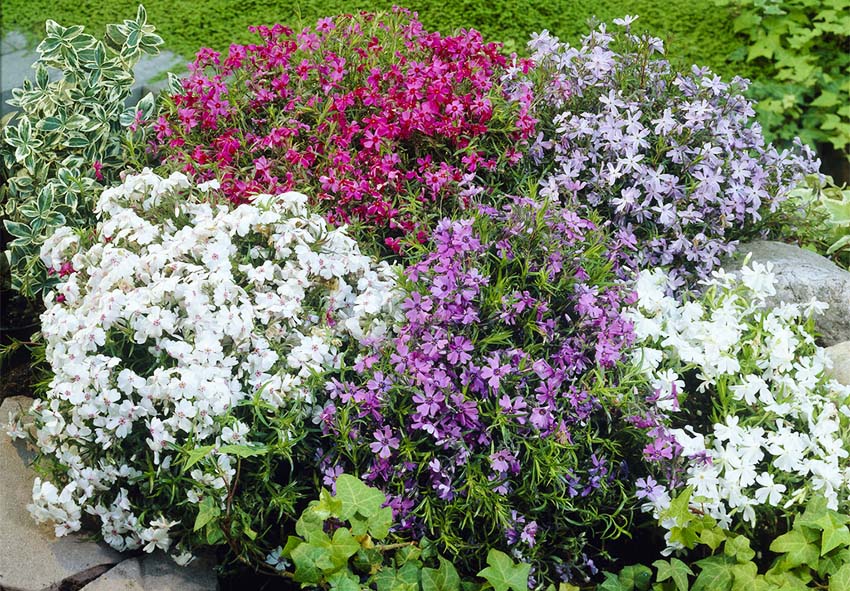In the world of gardening, few things offer the timeless beauty and enduring charm of a well-designed perennial mixborder. If you’re looking to elevate your outdoor space with a burst of color and texture that lasts year after year, then a perennial mixborder is the perfect solution for you. Our blog is a perfect place to find all the information you need. In this article, we’ll delve into what makes perennial mixborders so special, how to choose the right plants, design tips for maximum impact, and essential maintenance practices to keep your garden thriving.
Why Should I Choose Mixborders for a Garden?

A perennial mixborder is a carefully curated garden bed composed of a diverse array of perennial plants. Unlike annuals, which need to be replanted each year, perennials return year after year, providing a reliable foundation for your garden’s design. These mixborders are not only aesthetically pleasing but also serve as vital habitats for pollinators and other beneficial wildlife.
Benefits of Perennial Mixborders
One of the most significant advantages of perennial mixborders is their long-lasting beauty. Once established, these gardens require minimal maintenance while providing continuous blooms and foliage interest throughout the seasons. Additionally, their ability to attract pollinators such as bees and butterflies adds a dynamic and eco-friendly element to your outdoor space.
Choosing the Right Plants
When selecting plants for your perennial mixborder, it’s essential to consider your climate, sunlight exposure, and soil conditions. Opting for a diverse mix of sun-loving, shade-tolerant, and drought-resistant perennials ensures year-round vibrancy and resilience in your garden. Here’s a table describing five popular perennial plants categorized by main factors:
| Plant name | Preferred Climate | Sunlight Exposure | Soil Conditions |
| Lavender | Mediterranean | Full sun | Well-drained, sandy soil |
| Hostas | Temperate | Partial to full shade | Moist, fertile soil |
| Black-eyed Susan | Temperate to tropical | Full sun to partial shade | Well-drained, average soil |
| Peonies | Arid to temperate | Full sun | Well-drained soil |
| Astilbe | Temperate | Partial to full shade | Moist, humus-rich soil |
Popular Perennial Plants for Mixborders

- Sun-Loving Perennials
Sun-loving perennials thrive in bright, sunny conditions and are perfect for creating focal points in your mixborder. Lavender is renowned for its fragrant foliage and spikes of purple, blue, or pink flowers. It thrives in sunny, well-drained locations and is prized for its aromatic leaves and ability to attract pollinators like bees and butterflies.
Coneflowers are iconic sun-loving perennials with daisy-like blooms and prominent, cone-shaped centers. They come in a variety of colors, including purple, pink, white, and orange, and are beloved for their drought tolerance and ability to attract butterflies and birds to the garden.
- Shade-Tolerant Perennials
For areas with limited sunlight, shade-tolerant perennials such as hostas and astilbes offer a lush and verdant backdrop. Hostas are prized for their lush, broad foliage and come in a variety of colors and textures. They thrive in partial to full shade and are ideal for adding lushness and texture to shady garden beds or under trees.
Astilbes are known for their feathery, fern-like foliage and graceful plumes of flowers in shades of pink, red, white, and lavender. They excel in moist, shady conditions and are perfect for brightening up shady corners of the garden.
- Drought-Tolerant Perennials
In regions prone to dry spells, drought-tolerant perennials are a lifesaver. Sedums, also known as stonecrops, are a diverse group of succulent perennials with fleshy, water-storing leaves. They come in various shapes, sizes, and colors, with some varieties producing clusters of star-shaped flowers.
Another drought-tolerant perennial is Yarrow. It is a hardy perennial with finely divided, fern-like foliage and flat clusters of tiny, daisy-like flowers in shades of white, yellow, pink, or red. It has a clumping growth habit and typically grows 1 to 3 feet tall. Yarrow is highly drought-tolerant once established, making it suitable for dry, sunny locations where other plants may struggle.
Design Tips for Perennial Mixborders
When it comes to designing perennial mixborders, careful planning and thoughtful consideration can make all the difference in creating a stunning and cohesive garden space. From selecting the right perennial plants to arranging them in a visually appealing manner, design plays a crucial role in achieving balance, harmony, and visual interest. Here are some essential design tips to help you maximize the beauty and impact of your perennial mixborders:
- Color and Texture: To create visual interest in your mixborder, experiment with a diverse palette of foliage colors and textures. Pair bold, spiky forms with soft, billowing blooms for a dynamic and harmonious composition that evolves throughout the seasons.
- Height and Structure: Layering plants of varying heights and structures adds depth and dimension to your mixborder. Consider placing taller specimens towards the back of the border to provide a backdrop for shorter plants and create a sense of perspective.
- Seasonal Considerations: Plan your mixborder to ensure year-round interest, incorporating plants that bloom at different times of the year. Evergreen perennials such as ornamental grasses and hellebores add structure and texture during the winter months when other plants are dormant.
Maintenance Tips

To keep your perennial mixborder looking its best, be sure to follow all the necessary instructions. These maintenance tips will help keep your perennial mixborders healthy, vibrant, and thriving throughout the growing season:
- Regular watering: Monitor soil moisture levels and water deeply when necessary, especially during dry spells.
- Deadheading spent blooms: Remove faded flowers to encourage continuous blooming and maintain a tidy appearance.
- Mulching: Apply a layer of organic mulch to help retain soil moisture, suppress weeds, and regulate soil temperature.
- Fertilization: Feed plants with a balanced fertilizer according to their specific needs, typically in spring or early summer.
- Pest and disease control: Keep an eye out for signs of pests and diseases, and take prompt action to prevent damage.
- Weed control: Regularly remove weeds to prevent competition for nutrients and water.
- Pruning: Prune back overgrown or leggy growth to promote bushier, healthier plants and maintain desired shape and size.
- Division: Divide overcrowded perennials every few years to rejuvenate them and prevent overcrowding.
- Soil amendment: Amend soil with compost or organic matter annually to improve fertility, texture, and drainage.
- Winter protection: Provide winter protection for vulnerable plants with mulch, frost cloth, or other protective measures in colder climates.
Conclusion
In conclusion, perennial mixborders offer a myriad of benefits for gardeners seeking a beautiful and sustainable landscape solution. By carefully selecting the right plants, implementing thoughtful design strategies, and following essential maintenance practices, you can create a stunning mixborder that brings joy and beauty to your outdoor space year after year. You can also read more about the best perennials for planting in spring on our blog. So why wait? Start planning your perennial mixborder today and watch your garden come to life with color, texture, and vitality.
Frequently Asked Questions (FAQs) about Perennial Mixborders
1. What are the key benefits of incorporating perennial mixborders into garden landscapes?
Incorporating perennial mixborders offers numerous benefits, including adding year-round color, attracting pollinators, providing habitat for beneficial insects, and requiring less maintenance compared to annual flower beds.
2. Which perennial plants are suitable for mixborders, and how can I choose the right ones for my garden?
Perennial mixborders can include a wide range of plants, such as flowering perennials, ornamental grasses, herbs, and groundcovers. Choosing the right plants involves considering factors such as bloom time, height, color palette, and growing conditions to create a harmonious and balanced composition.
3. Which perennials for mixborders can be ordered from your online store?
Our online store Dutch-bulbs.com offers a diverse selection of perennials suitable for mixborders, allowing you to create stunning and vibrant garden landscapes. From classic favorites to unique varieties, our collection includes a wide range of flowering perennials, ornamental grasses, groundcovers, and more. Explore our catalog to find popular mixborder perennials such as iris, hemerocallis, papaver, astilbe, hostas and phlox.
4. How do I design and plan a perennial mixborder to ensure visual appeal and seasonal interest?
Designing and planning a perennial mixborder requires careful consideration of factors such as plant height, bloom time, color scheme, and overall garden style. Begin by sketching out your border layout and selecting plants that complement each other in terms of height, color, and texture. Arrange plants in groups or drifts, with taller specimens towards the back and shorter ones towards the front, to create depth and visual interest.
5. What maintenance tasks are involved in caring for a perennial mixborder, and how can I ensure its long-term health and beauty?
Caring for a perennial mixborder involves regular maintenance tasks such as watering, fertilizing, mulching, weeding, and deadheading spent blooms. Additionally, periodic division and replanting of overcrowded perennials may be necessary to maintain plant health and vigor. Proper soil preparation, adequate sunlight, and regular monitoring for pests and diseases are also essential for the long-term success of a perennial mixborder.
Published: 16.04.2024
